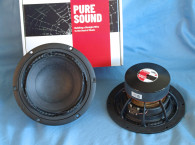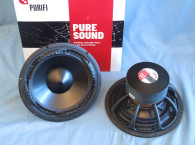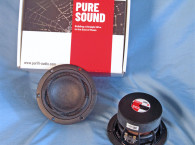
The feature set for the PTT6.5M midrange begins with a proprietary eight-spoke cast-aluminum frame, comprised of narrow (about 13mm to 6mm) tapered spokes, completely open below the spider (damper) mounting shelf for cooling (Photo 2). Additional cooling for this driver is provided by 12 oval-shaped 10mm x 7mm vents surrounding the cone neck joint beneath the dust cap, with no pole vent.
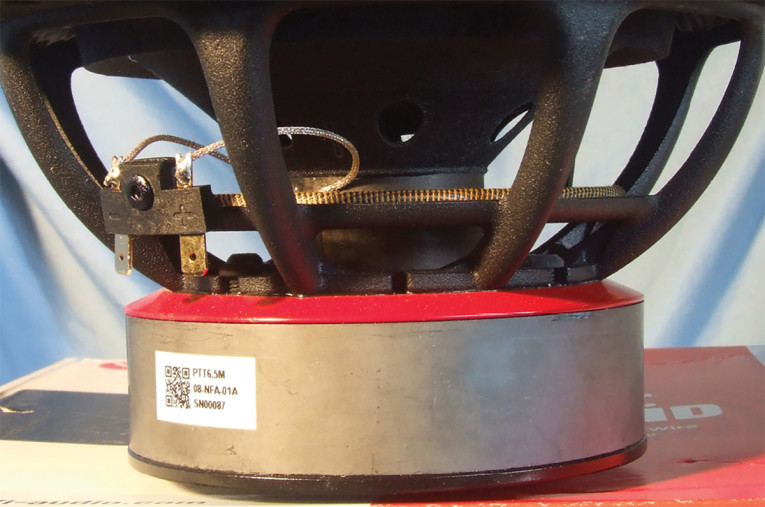
The cone assembly consists of a slightly curvilinear profile paper cone made with a proprietary fiber mix, a 3.25” concave dust cap that covers about 70% of the cone surface, plus the addition of a V-shaped edge reinforcing ring glued around the outside rim of the back side of the cone (also visible in Photo 2). This reinforcing ring makes the cone edge extremely stiff, and would obviously severely dampen cone edge resonances.
Compliance is provided by a NBR surround, which like the PTT6.5X and PTT4.0X surrounds is an entire story in itself. Looking at Photo 1, this is obviously like no other surround in the history of woofer development. Surrounds, besides providing compliance and centering, are indeed a source of noise and distortion as well as a tool for damping the outside rim of a cone. It is no surprise that surrounds have been the subject of numerous patents that offer solutions based on shape, material, and complex material thickness, but I have yet to see anything this articulated. The PTT6.5M, like all the drivers in the Purifi Audio lineup, has a surround configuration tht is a combination of alternating sections of both reverse roll and positive roll, plus some interesting undulations within the alternating sections. Note that the positive roll has an obvious left/right asymmetry, which yields a positive/negative going articulation on either end of the reverser roll sections.
The following has been previously published but bears repeating, as commented by Purifi Audio’s co-founder Lars Risbo: “The surround geometry serves multiple purposes: the strange shape ensures that its radiating area Sd is kept constant over its full stroke (eliminating a strong IMD source). It further tames the usual cone edge breakup (together with the stiffening ring below the cone edge) and is very resilient to the back pressure from a small box. Finally, it is excellent at keeping the coil centered even at large excursions. The combined result is that the IMD hovers around the theoretical Doppler limit.”
The remaining compliance is provided by a 3.7” diameter symmetrical roll flat spider (the individual rolls themselves are asymmetrically shaped). The motor consists an FEA-optimized 100mm × 25mm ferrite ring magnet with milled and tapered plates, the front plate having a red coating and the back plate having a black emissive coating, plus a pole piece comprised of a neodymium pole magnet sandwiched between steel sections that serves to linearize the Bl.
Driving the cone assembly is a 39mm (1.54”) diameter substantial four-layer voice coil wound with round aluminum wire on a nonconducting fiberglass former. Like the surround, this four-layer coil also exhibits some very unique engineering. Unlike a winding that has the same width across its full length, this four-layer coil has alternating two- and four-layer sections on the length of the coil with varying widths of two- and four-layer sections (Photo 3).
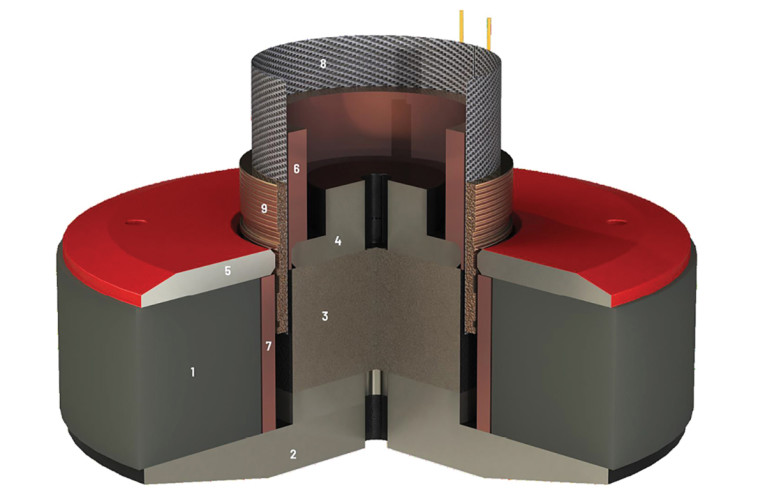
As can be seen in the Purifi motor rendering, most of the pole (3) is replaced by a strong neodymium magnet: This reduces the coil inductance significantly as well as the inductance vs. position gradient all the way to DC (according to Purifi, this cannot be achieved by shorting rings since they only work above a certain frequency determined by the their cross sectional area).
An iron pole piece extension (4) is optimized to flatten the inductance vs. position further. This virtually eliminates the current dependency of the Bl factor as well as the position dependency of the coil impedance — two major nonlinear sources of especially IMD (changing the Bl or coil impedance modulates the sensitivity of the speaker leading to amplitude modulation).
Two very thick copper shorting rings (6) and (7) are surrounding the coil within its full linear stroke. The purpose of these is to further lower the inductance and shield the iron from the AC field of the coil. Such an AC field in the iron is a major source of distortion (hysteresis and BH saturation).
Note that the top ring (6) extends through the gap since the AC field induced in the iron concentrates at surfaces close to the coil and thus needs the most shielding. The pole ventilation is through holes in the cone assembly to get enough venting area to eliminate air rushing noises.
Other features include 200W IEC long-term power handling rating, a 2.9mm Xmax, and voice coil copper braid lead wires that are terminated to gold-plated solderable terminals located on one side of the frame.
I began testing the Purifi PTT6.5M08-NFA-01 midrange using the LinearX LMS analyzer and the Physical LAB IMP Box (same type fixture as a LinearX VI Box) to create both voltage and admittance (current) curves with the driver clamped to a rigid test fixture in free-air at 0.3V, 1V, 3V, 6V, 10V, and 15V with oscillator on time between sweeps to simulate the actual thermal process over time. The 15V curves were not sufficiently linear to get an adequate curve fit and were discarded.
Following my established protocol, I no longer use a single added mass measurement and instead use the company supplied Mmd data (16.9 grams for the PTT6.5M08-NFA-01). I post-processed the collected data, in this case the 12 550-point (0.3V-10V) sine wave sweeps for each Purifi Audio sample, and divided the voltage curves by the current curves to generate impedance curves. I derived the phase using the LMS calculation method, and imported the data, along with the accompanying voltage curves, to the LEAP 5 Enclosure Shop software. Figure 1 shows the 1V free-air impedance curve. Table 1 compares the LEAP 5 LTD/TSL TSP data and factory parameters for both of the Purifi Audio PTT6.5M08-NFA-01 samples.


LEAP LTD and TSL parameter calculation results for the Purifi midrange correlated reasonably well with the published factory data, with a 2dB difference in 2.83V sensitivity. My number is a Thiele-Small (T-S) parameter calculation result, and Purifi uses a 300Hz to 800Hz measurement referenced to 20µPa.
As usual, I followed my established protocol and set up computer enclosure simulations using the LEAP LTD parameters for Sample 1. Two simulated enclosures were programmed into the LEAP 5 software, both sealed enclosures. The first enclosure volume was determined empirically to result in a cabinet F0 that would be more than an octave below the lowest likely passive high-pass crossover frequency of 200Hz. This resulted in a 0.28ft3 box (F0=80Hz) that would make the midrange impedance less likely to interact with the passive filter. The other enclosure was 50% of the first enclosure volume at 0.14ft3, and it would be perhaps more appropriate for an active network design (F0=100Hz). Both enclosures were simulated with 50% fill material (fiberglass).
Figure 2 displays the box simulation results for the PTT6.5M midrange in the two sealed enclosures at 2.83V and at a voltage level that achieves excursion equal to Xmax+15% (3.33 mm for the PTT6.5M). This resulted in a F3 of 101Hz (-6dB=72Hz) with a Qtc=0.51 for the larger closed box and -3dB for the more compact sealed cavity simulation of 107Hz (-6dB=82Hz) and Qtc=0.62. Increasing the voltage input to the simulations until the Xmax +15% excursion was reached resulted in 105dB at 20V for the sealed enclosure simulation and 105.4dB with the same 20V input level for the smaller box. Figure 3 shows the 2.83V group delay curves. Figure 4 shows the 20V excursion curves. The higher voltage results assumed no high-pass filter and are only being given as a reference. Using a second- or third-order passive or active high-pass filter would result in much lower excursion and higher output capability.

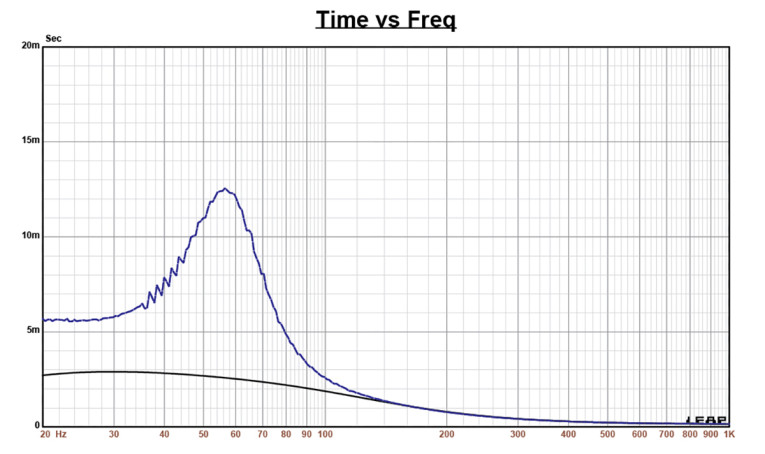

Klippel analysis for the Purifi Audio 6.5” midrange was performed by Jason Cochrane at Warkwyn with the Klippel KA3 analyzer. While this data is not expressly required for midrange drivers, since with a high-pass filter they will not be operating in the piston range that the Klippel data addresses, it is still a good performance reference. The Bl(X) curve for PTT6.5M shown in Figure 5 is extremely symmetrical, with a narrow Bl profile of a short Xmax woofer, or midrange in this case. The Bl symmetry curve (Figure 6) shows virtually no offset from a point of certainly outward. Figure 7 and Figure 8 show the Kms(X) and Kms symmetry curves for the PTT6.5M midrange. The Kms Stiffness of Compliance curve (Figure 7) is broad and with a degree of asymmetrical behavior along with a small degree of forward (coil-out) offset. The Kms symmetry range curve (Figure 8) shows the coil-in offset to be mostly constant at 1.6mm out to the 2.9mm Xmax.
Displacement limiting numbers calculated by the Klippel analyzer for the using the full-range woofer criteria for Bl was XBl @ 82% (Bl dropping to 82% of its maximum value) equal 3.7mm for the prescribed 10% distortion level. For the compliance, XC @ 75% Cms minimum was 5.89mm, which means that for the Purifi Audio midrange, the Bl is the more limiting factor for getting to the 10% distortion level, which admittedly seems counterintuitive. Again, this data was presented only as a performance reference.
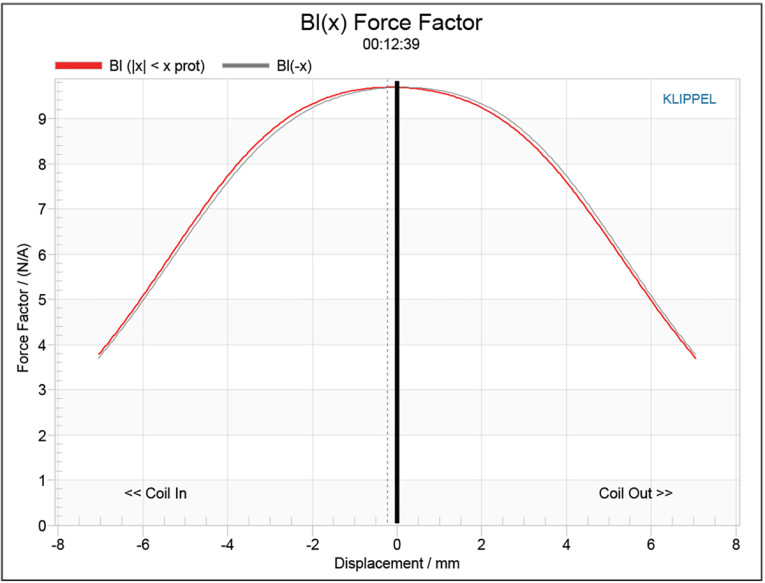

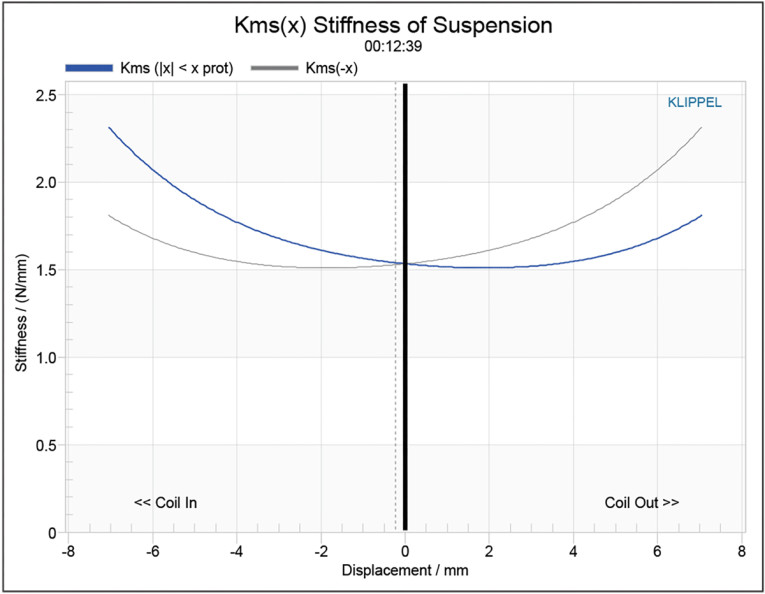
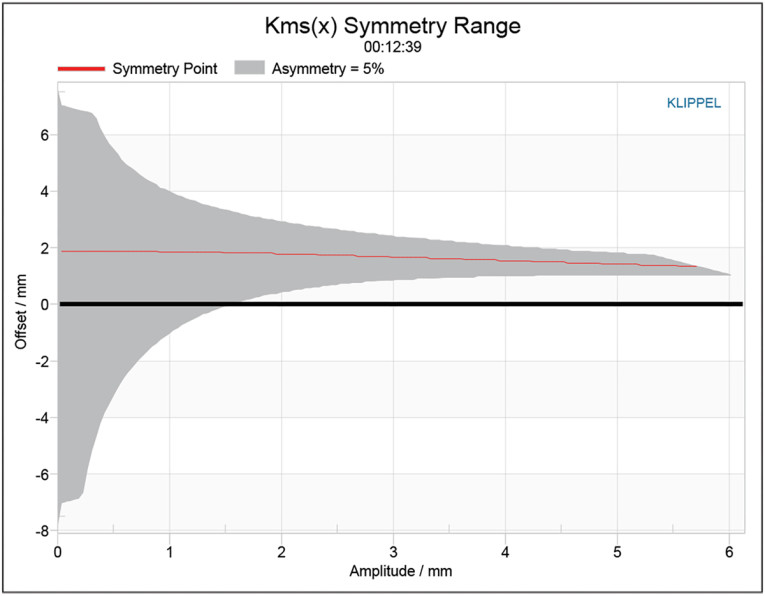
Figure 9 gives the inductance curve Le(X) for this transducer. Motor inductance will typically increase in the rear direction from the zero rest position as the voice coil covers more of pole in a conventional motor, which is not exactly what you see in this graph, but this is also not a conventional motor. More importantly, the inductive “swing” from Xmax in to Xmax out is an amazingly small 0.117mH, but again, this is for piston range performance that this midrange will not be indulging in.
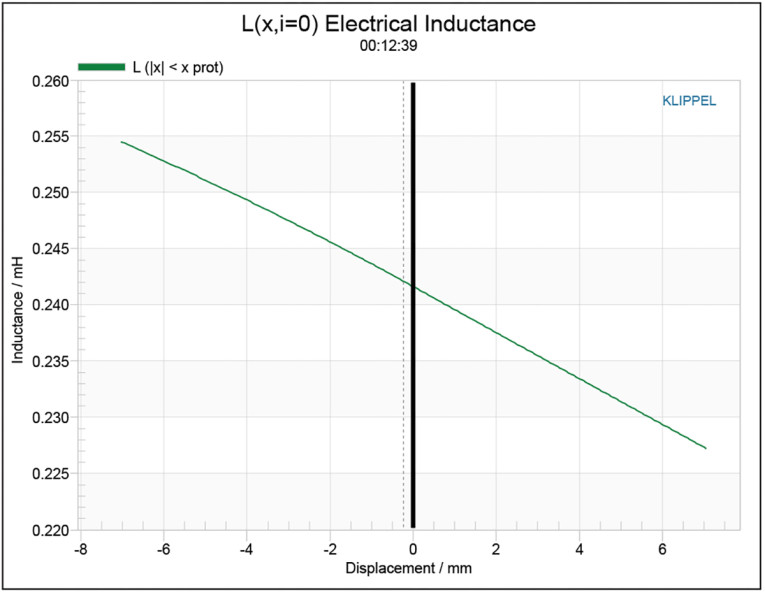
Figure 10 gives the on-axis response, indicating a rather smooth response that is ±2dB from 500Hz to 3.3kHz, followed by three break-up mode peaks between 4kHz to 8kHz, where the driver begins its low-pass roll-off. Figure 11 displays the on- and off-axis frequency response at 0°, 15°, 30°, and 45°, -3dB at 30° with respect to the on-axis curve occurs at 2.5kHz, so a cross point in that vicinity or lower should be work well to achieve a good power response and directivity index curve. In terms of a high-pass filter, that will be baffle dependent, but 200Hz to 400Hz should be no problem for a passive network design.
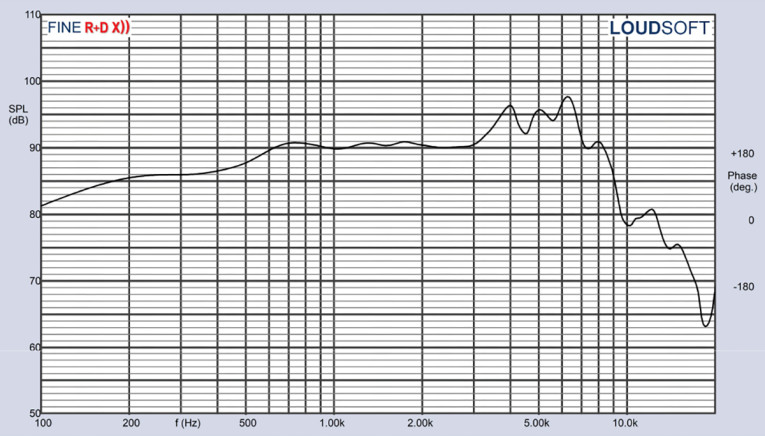

Figure 12 gives the normalized version of Figure 11. Figure 13 displays the CLIO Pocket horizontal polar plot (in 10° increments). Figure 14 gives the two-sample SPL comparison, indicating a very close match (≤ 0.3dB) throughout the operating range of the driver.
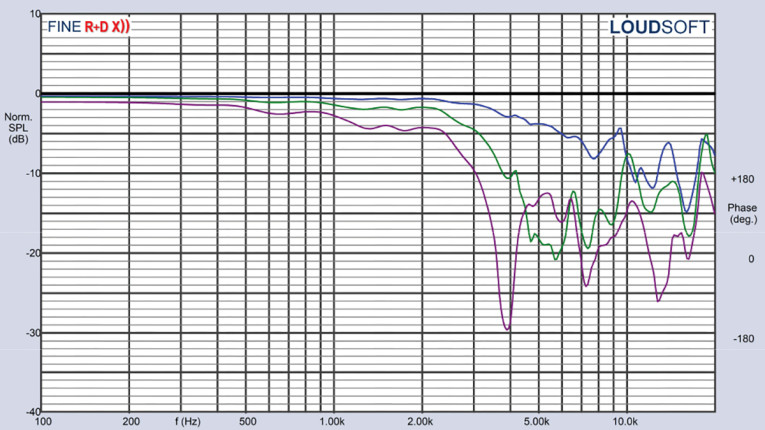

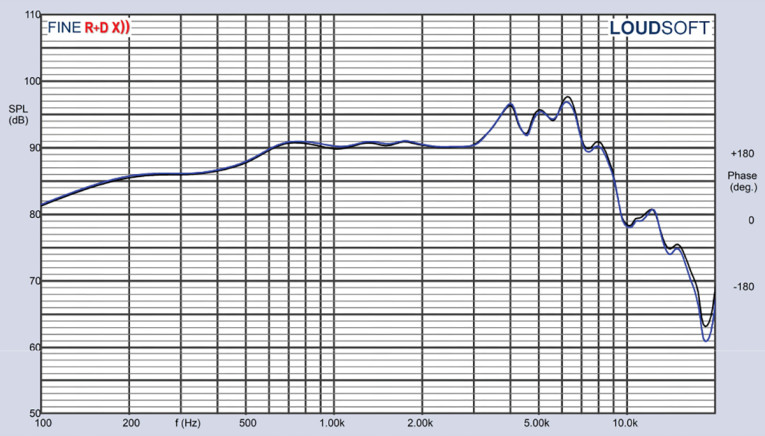
For the final group of measurements on the Purifi PTT6.5M, I utilized the Listen, Inc. SoundCheck 20 software and AudioConnect analyzer with the Listen SCM microphone (graciously supplied to Voice Coil magazine by the folks at Listen, Inc.) to measure distortion and generate time-frequency plots. For the distortion measurement, I mounted the 6.5” midrange rigidly in free-air, and set the SPL to 94dB (my criteria for home audio transducers) at 1m (4.2V), using the built-in SoundCheck pink noise stimulus generator and SLM.
Then, I measured the distortion with the Listen, Inc. microphone placed 10cm from the driver. This produced the distortion curves shown in Figure 15, which exhibits extremely low third-harmonic distortion (less than 2.5%, and characteristically lower than 0.6% from 600Hz to 7kHz. If you compare this data to the Purifi Audio factory data, there is variation. Note that Purifi Audio has developed its own proprietary distortion measurement system with the data acquired in an anechoic chamber, compared to my measurements done with a background noise level of around 55dB. Either way, the distortion on all the Purifi drivers, my measurements or theirs, is very low and definitely a hallmark of Purifi’s design technology.
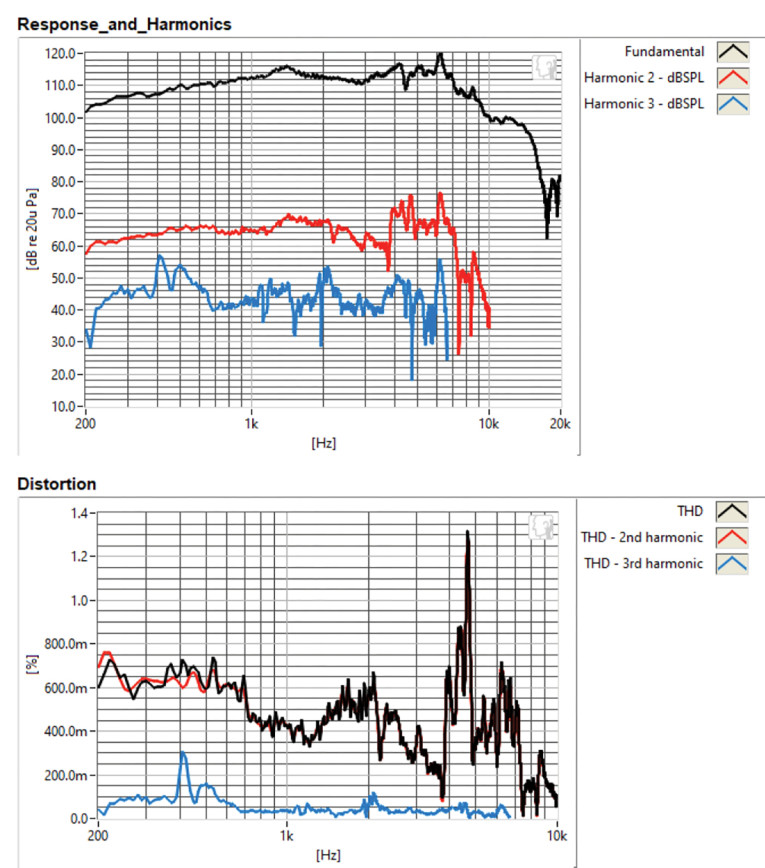
I then engaged the SoundCheck software to get a 2.83V/1m impulse response for this driver and imported the data into Listen’s SoundMap Time/Frequency software. Figure 16 shows the resulting cumulative spectral decay (CSD) “waterfall” plot. And, Figure 17 shows the Wigner-Ville surface plot (for its better low-frequency performance).
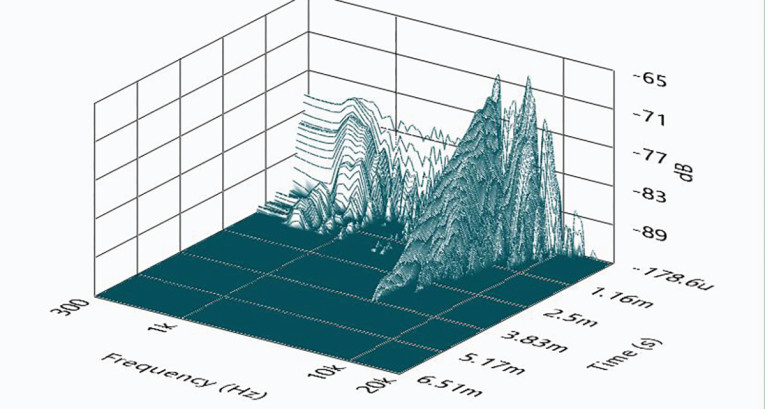
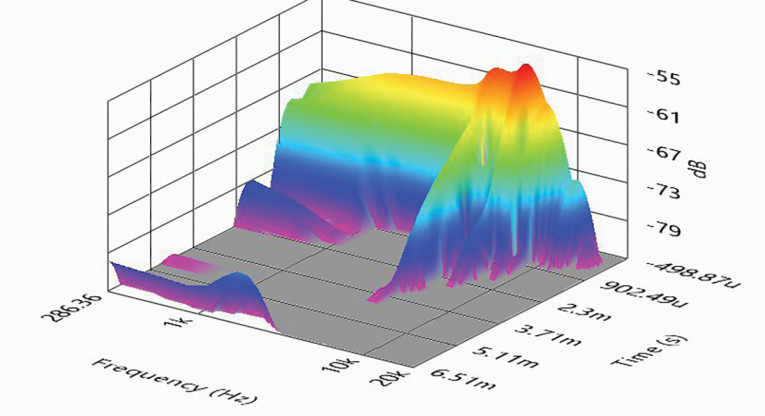
Looking over the data I assembled for the new Purifi PTT6.5M08-NFA-01 6.5” midrange, there is no question that Purifi Audio has created a very high-performance midrange to accompany its high-performance high Xmax woofers. For a relatively new company, Purifi Audio has unleashed an impressive ever-growing line of transducer designs and combined this with a high level of build quality. The PTT6.5M is a well-crafted 6.5” transducer that would do well designed into the three-way high-end two-channel hi-fi, home theater, or studio monitor markets. As with every one of the Test Bench reports I publish in Voice Coil magazine, I always regret not being able to design these drivers into a system and do a proper subjective evaluation and I certainly would like to do that with the Purifi Audio drivers! For more information, visit www.purifi-audio.com. VC
This article was originally published in Voice Coil, January 2023.




